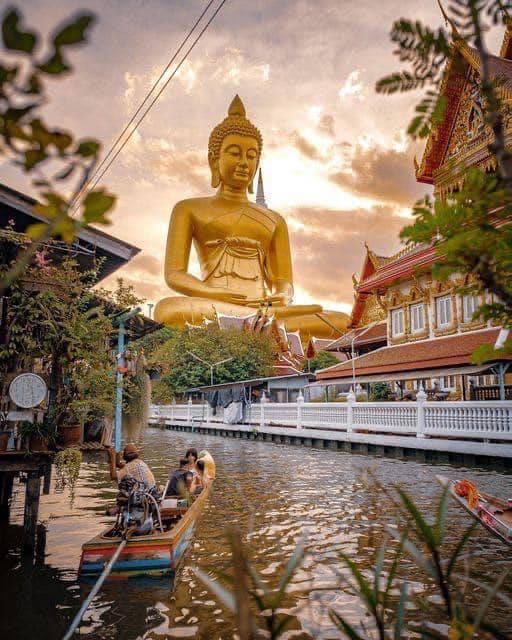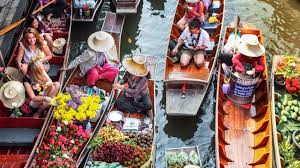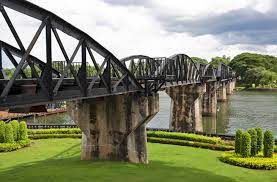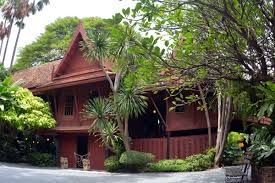Bangkok traces its roots to a small trading post during the
Ayutthaya Kingdom in the 15th century, which eventually grew and became the
site of two capital cities, Thonburi in 1768 and Rattanakosin in 1782. Bangkok
was at the heart of the modernization of Siam, later renamed Thailand, during
the late 19th century, as the country faced pressures from the West. The city
was at the center of Thailand's political struggles throughout the 20th
century, as the country abolished absolute monarchy, adopted constitutional
rule, and underwent numerous coups and several uprisings. The city,
incorporated as a special administrative area under the Bangkok Metropolitan
Administration in 1972, grew rapidly during the 1960s through the 1980s and now
exerts a significant impact on Thailand's politics, economy, education, media,
and modern society.
The Asian investment boom in the 1980s and 1990s led many
multinational corporations to locate their regional headquarters in Bangkok.
The city is now a regional force in finance, business, and pop culture. It is
an international hub for transport and health care and has emerged as a center
for the arts, fashion, and entertainment. The city is known for its street life
and cultural landmarks, as well as its red-light districts. The Grand Palace
and Buddhist temples including Wat Arun and Wat Pho stand in contrast with
other tourist attractions such as the nightlife scenes of Khaosan Road and
Patpong. Bangkok is among the world's top tourist destinations and has been
named the world's most visited city consistently in several international
rankings.
Bangkok's rapid growth coupled with little urban planning has
resulted in a haphazard cityscape and inadequate infrastructure. Despite an
extensive expressway network, an inadequate road network and substantial
private car usage have led to chronic and crippling traffic congestion, which
caused severe air pollution in the 1990s. The city has since turned to public
transport in an attempt to solve the problem, operating eight urban rail lines and
building other public transit; however, congestion remains a prevalent issue.
The undisputed kingpin
of Southeast Asian tourism and youthful hedonism in Thailand, Bangkok is a
heady mix of sounds, smells and sights that awe and overwhelm in equal measure.
Most first-time visitors head straight for the famous streets of Banglamphu,
where the gaudy and ceaseless movement of Khao San Road continues well into the
night. It is spots like these that have driven Bangkok to the forefront of
international party tourism, and for many the neon clubs and super-bars of this
downtown region have become something of a rite of passage.
But there’s much more
to see and do here than meets the eye, and most all Bangkok tour guides would
be quick to stress the city’s political importance, standing as it does at the
very heart of Thai governance. It’s also home to a countless array of temples,
from the opulent Grand Palace to the sparkling Golden Mount.
But it doesn’t stop
there; Bangkok has also long-been fabled as the street food king of the world,
home to better Pad Thai conjurers than any city in the county and host to some
of the most creative culinary outlets going. These can be spotted right across
the town, hidden curiously down the backstreets near the Chao Phraya River or
steaming endlessly outside the Muay Thai arenas of the center.
Bangkok, Thailand: Annual Weather Averages
Located in South East Asia, Bangkok offers a
constant tropical climate though out the year with little variation in
temperature. However the hotter months are typically through March and April
while the cooler months are typically from November to December. Our Bangkok
hotel staff will be happy to provide you with daily weather information!
SHARE THIS ARTICLE
Share on Facebook Share on Twitter Share via
Email Share on VK Share on Line Share on baidu
April is the hottest month in Bangkok with an
average temperature of 30.5°C (87°F) and the coldest is December at 26°C (79°F)
with the most daily sunshine hours at 9 in December. The wettest month is
September with an average of 220mm of rain. The best month to swim in the sea
is in April when the average sea temperature is 30°C (86°F).
How about the Bangkok
Hotel?
Many luxury hotel chains
can be found in Bangkok, such as the Peninsula Bangkok, which in 2006 made the
top 10 in Travel and Leisure magazine's top 100 hotels list, coming in at
number 4, while the Oriental Hotel claimed the ninth spot. Sukhumvit Road hosts
a series of international chains such as JW Marriott, The Landmark, InterContinental,
and Sheraton, and many boutique hotels such as Tenface Bangkok, The Davis, and
Unico Grande Sukhumvit. The Banyan Tree on Sathon, one of Bangkok's tallest
hotels, featured the highest bar and restaurant in the city, Vertigo, until the
launch of Sirocco Restaurant on top of State Tower, 247 m (810 ft) up from the
streets of Bang Rak.
Bangkok offers many
smaller boutique hotels for travelers seeking uniquely designed lodgings and
personalized service. There are large numbers of inexpensive hotels scattered
throughout the city such as Yaowarat Road, most notably in the backpackers'
paradise of Khaosan Road. Motels are uncommon in Bangkok. Bed and breakfasts
(B&Bs) adapted to the Asian lifestyle are a fast-growing segment. A variety
of these small houses can be found in Phloen Chit, Watthana, and Khlong Toei.
What
is the best way to get around Bangkok?
The
best way to get around Bangkok is by Skytrain or Metro, which is fast,
affordable and easily navigable for visitors. The city also offers an extensive
network of buses, but these are prone to traffic jams, which the city is
notorious for. Taxis are fairly cheap, but again, gridlock is a regular issue
BANGKOK
TRANSPORTATION
GUIDE
TO GETTING AROUND ON THE BTS SKYTRAIN, MRT UNDERGROUND METRO, CHAO PHRAYA EXPRESS
BOAT, TUK TUKS, BUSES AND TAXIS
Bangkok
BTS Metro and MRT Train Map
Map
by Zeddlex
Bangkok
has some of the worst traffic in the world, but improved public transportation
has made it much easier to get around the city. The above-ground trains (the
BTS Skytrain) and the underground metro (the MRT) run from 6am to midnight, and
although they don’t have the most convenient connections and require separate
tickets, are the best ways to reach the central and modern parts of town.
Bangkok
Traffic The BTS Skytrain above Bangkok's heavy traffic
Connecting
from/to the BTS from/to the MRT involves some walking, as you have to exit one
station and look for the other. The connection stations are:
BTS
Asok - MRT Sukhumvit
BTS
Sala Daeng - MRT Si Lom
BTS
Mo Chit - MRT Chatuchak
In
the old city, by the river, tourists and locals use the traditional (time-consuming)
boats, tuk tuks and taxis.
BTS
SKYTRAIN
BTS
Skytrain, Bangkok
This
clean, safe, fast, air-conditioned, and relatively cheap overground train
service is the best way to reach many of the major sites downtown.
Unfortunately, although it’s been in operation since 1999, it doesn’t yet cover
the whole city, like the old town (Rattanakosin) or the popular Khao San Road.
It
has two lines, linking at Siam station, with trains arriving every 3 to 6
minutes, between 6:30am and midnight.
Fares
depend on the distance, and the magnetic fare cards can be purchased at all
stations. Most ticket machines only take coins, but there are also ticket
booths at most stations.
There
are single-journey tickets and one-day passes -- if you’re staying downtown and
plan on using it several times in one day, the pass is the better option, as it
allows unlimited travel.
Signs
and announcements are in English as well as Thai, so tourists have no trouble
using it.
MRT
METRO TRAINS
MRT
Trains, Bangkok
Operating
since 2004, the MRT (Mass Rapid Transit) was Bangkok’s second mass transit
system and is still expanding. It’s the underground train service, with three
stations connecting with the overground BTS Skytrain (see intro above). It’s
convenient for those staying in the modern part of town, and who want to reach
Chinatown and the Old City. It also connects to the city’s central train
station, at Hua Lamphong. Trains run every 4 to 10 minutes, from 6am to
midnight.
CHAO
PHRAYA EXPRESS AND TOURIST HOP-ON-HOP-OFF BOATS
Chao
Phraya Express Boat, Bangkok
You’ll
see different types of boats on the Chao Phraya River -- the long-tail “river
taxis,” hotel shuttles, private river cruises, and traditional canal boats. The
Chao Phraya Express is the traditional boat service most used by locals to
reach the Old City. It operates between 6am and 7pm, stopping at the different
piers about every 10 minutes at rush hours, and about every 20 minutes
throughout the day. It’s also used by many tourists, on their way to the most
historic sites on the riverside. Tickets can be purchased on board, but it’s
best to get them at the counter at the pier.
The
most useful boats for locals are those with the orange flag, as they’re the
most frequent and stop at almost every pier, but tourists are better served by
the blue flag boats, which they can hop on and off at the main sightseeing
piers -- you can get your tickets here: Unlimited Hop Chao Phraya River All Day
All Night Pass
If
you’re staying downtown or in any other area away from the river, and want to
take any of these boats, head to the Saphan Taksin station of the BTS Skytrain,
where you’ll find the Sathorn pier (or “Central Pier”) directly in front. Hold
on to your ticket as proof of purchase.
Although
it may seem like a slower way to get around, considering the traffic in central
Bangkok, you often reach your destination by boat in half the time you would in
a taxi.
TAXI
Bangkok
Taxi
Taxis
are plentiful and inexpensive, but avoid them at peak hours and make sure your
driver turns on his meter. Many drivers (illegally) try not to do so, and offer
an inflated flat fare instead. In that case, refuse the service and look for another.
Those waiting by the Grand Palace, on Khao San Road, and outside the big hotels
are least likely to use the meter.
In
general, cars are new and comfortable, and the drivers are courteous (but speak
little English). To most places within the city, you shouldn’t pay more than
100 or 150 baht (less than 5 US dollars/4 British pounds or euros). Freeway
tolls are paid by the passenger.
Tipping
is not really a common practice, but you may always round up to the nearest 5
or 10 baht.
RIDESHARING
Bangkok
Traffic
Uber
no longer operates in Thailand, but you may use the ridesharing service Grab.
It works exactly the same, and although it may be slightly more expensive than
a regular taxi, it’s still much cheaper than similar journeys in the US or
Europe. It can be quite a lifesaver when there are no taxis around, and you
avoid the problem of attempting to communicate with a taxi driver who doesn’t
speak much English or doesn’t want to turn on the meter. You also know exactly
how much you’ll pay for, and don’t have to worry about overcharging.
BUSES
Bangkok
bus
We
don’t recommend taking buses in Bangkok, as they’re cheap but slow and
confusing. And although there are now modern vehicles, many are old, noisy and
dirty, and lack air conditioning. If you’re determined to have such an
experience, know that bus lines run between 5am and 11pm. Tickets are bought on
board, and to let the driver know you want to get off, stand up and approach
the door.
TUK
TUK
Bangkok
Tuk Tuks
If
you just want to get to the end of a long street or need to reach the other
side of a neighborhood, take a tuk tuk. These noisy three-wheeled vehicles are
often hard to resist, but drivers sometimes trap tourists into stopping at
tailor or gem shops (that pay them commissions). Refuse any unrequested stops.
The price is negotiated in advance, and is often not particularly cheap. If
it’s just too unbelievably cheap, you’ll be taken on that “sightseeing” tour
with stops at the gemstone dealers and tailors. They usually take as many as
three people.
MOTORCYCLE
TAXIS
They’re
a quick and cheap way to travel short distances in Bangkok, but only for the
most adventurous who don’t mind near-death experiences. You’ll see them down
most side streets, with drivers wearing orange vests (some also wear green or
purple vests). If yours doesn’t provide a helmet, find another who does. The
prices for short rides are fixed, but you’ll have to negotiate for longer
distances.
ON
FOOT
Bangkok
isn’t a walkers’ city. It’s hot, humid, and polluted, so it’s best to take
local transport between sights. The exceptions are Chinatown and the area
around the Grand Palace, which have several attractions within walking
distance. In Siam and Ratchaprasong, elevated walkways connect major shopping
malls and BTS Skytrain stations, making it easier to go between hotels and
different attractions in the area on foot.
AIRPORT
LINKS - TRANSPORTATION TO AND FROM THE CENTER OF BANGKOK
To
know how to go from/to Bangkok's Suvarnabhumi International and Don Muang
airports,
Bangkok has a unique
culture
Bangkok’s culture is
influenced by the modern day, yet still retains very proud links to its
tradition and Buddhist spirituality. This culture can be found on every street
corner, in the food, language, music, dance, the arts, and Buddhist temples.
"Bangkokians"
are warm and friendly people, generous with their welcoming smile, deeply proud
of their "Thai-ness", and normally too polite to show offence, anger
or annoyance. Only a fool though, would dare mistake their friendliness for
weakness.
There are standards of
behaviour that should be upheld at all times in Bangkok, and Thailand more
broadly. Thais take great pride in their monarchy, especially the King.
Visitors are well-advised to respect the reverence in which Bangkokians hold
the Thai Royal family.
Explanation of Thai
etiquette
Buddhism is the
predominant religion in Bangkok, with monks, temples, spirit houses, Buddha
images and statues everywhere you look. It is expected that appropriate
clothing be worn in temples, and shoes removed before entering.
There is also a sizeable
Muslim minority scattered around the city who are 100% Thai is every respect.
For Bangkokians,
maintaining a calm, peaceful and harmonious demeanour at all times is crucial.
Outward expressions of bad temper, raised voice, threatening gestures, arguing,
or critical comments is universally avoided. Such behaviour serves no useful purpose
in polite Thai society.
The famous wai is used
as a gesture for both greeting and respect. A Wai requires the person to use
both of his hands as if praying in front of his face. In general, it is
considered to be a mark of respect to try to keep the head at a lower level
than that of a senior or older person when talking to or passing them. Its not
advisable for tourists to attempt to Wai others, as there is a complicated
protocol involved. A smile or nod is enough to acknowledge a Wai given by hotel
staff and so on.
On entering a private
house, it is customary to always remove your shoes. The polite way to address
an elder of similar, or older age is to use the title "Khun" before
the person's first name.
Most Bangkokians are too
polite to comment openly on disrespectful behaviour, but you should be aware
that their silence should not be mistaken for it is still offensive. Looks and
appearances are important to Bangkokians. Personal hygiene is held in high
regard by Thai people, when meeting them, dressing smartly, or at least
appropriately, can be interpreted as the degree of respect you hold for them.
Many homes and
businesses have spirit houses on the property to allow the placement of alms,
flowers, and foodstuffs such as sticky rice and rice whiskey. The purpose of
the Spirit House is to provide an appealing shelter for the spirits, or
celestial beings, who would otherwise reside in the spaces occupied by human
dwellings, large trees, caves, cliffs, waterfalls etc. It is believed that the
spirits are finicky and mischievous, demanding respect from humans and capable
of doing great harm if they aren't afforded proper respect. This custom perhaps
helps shed some light on the spirituality of Thai people in general.






































